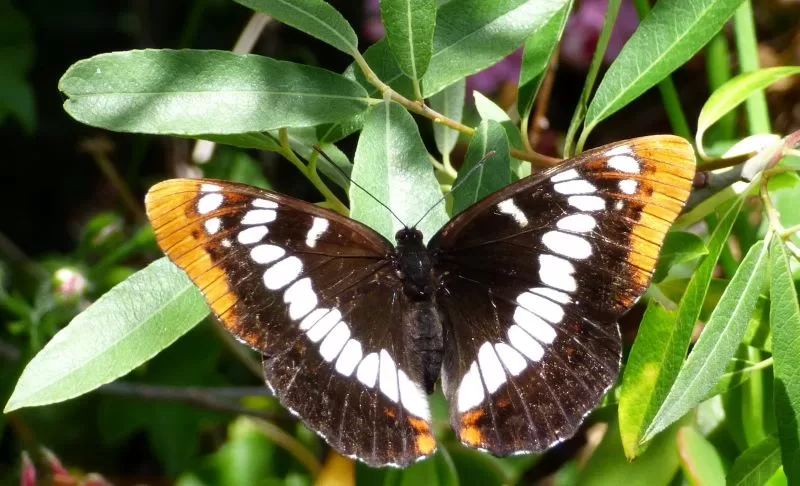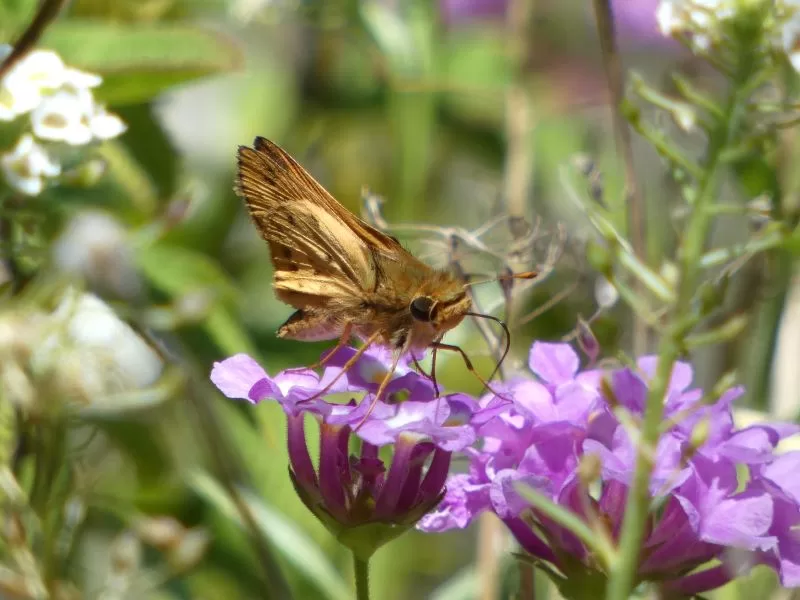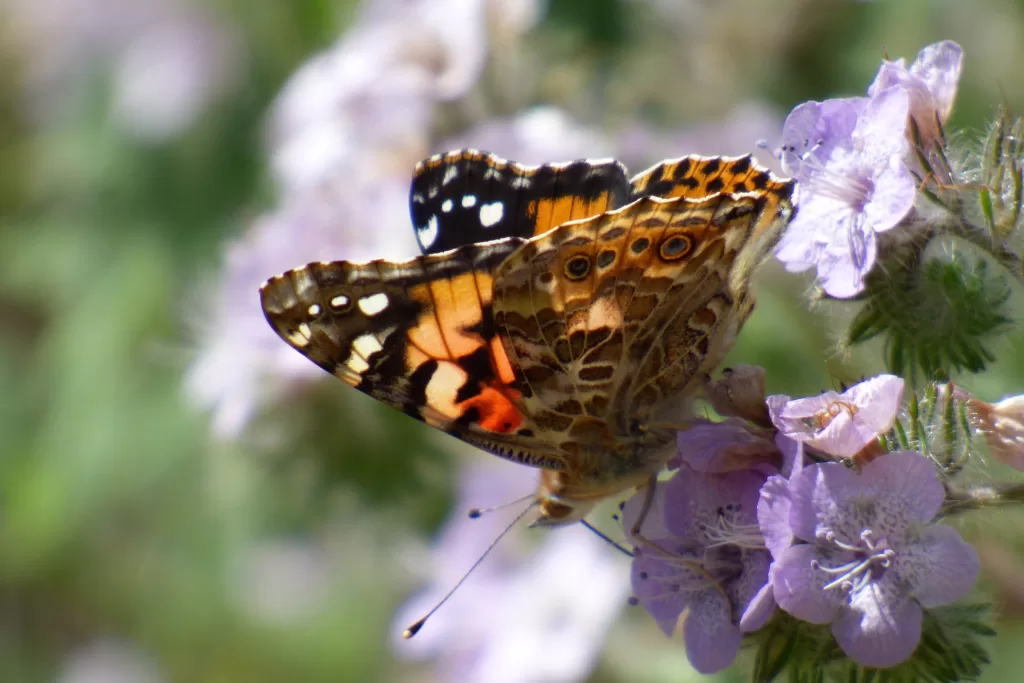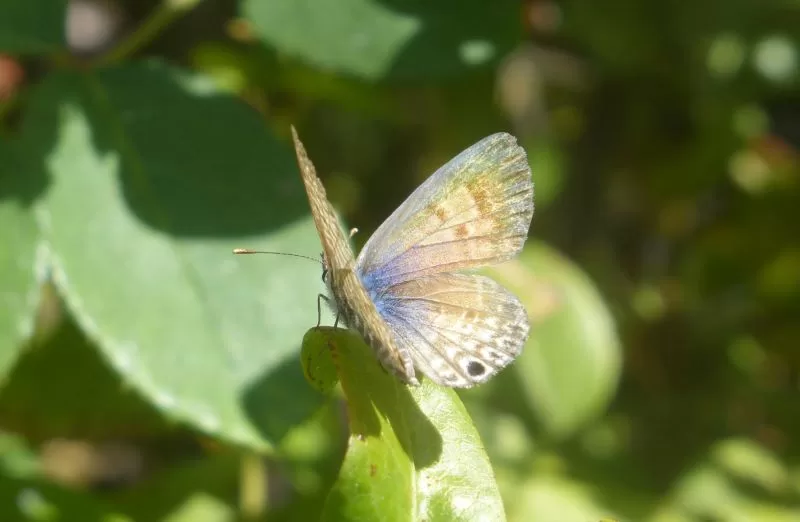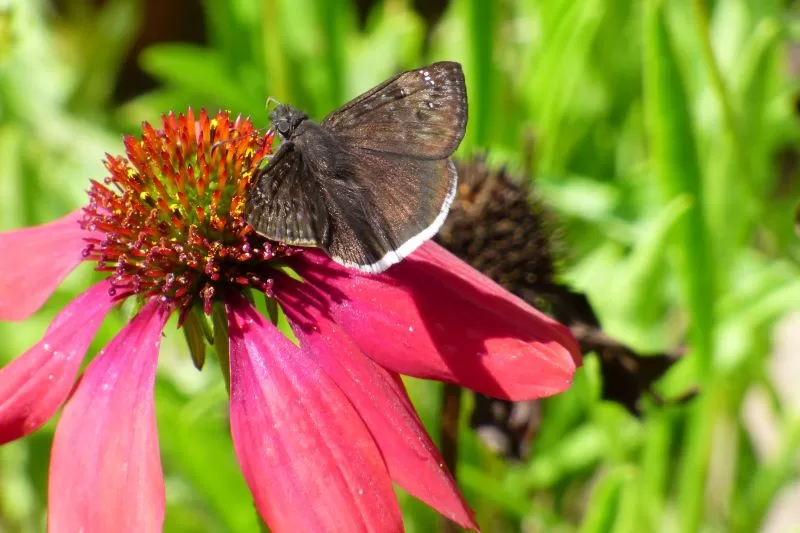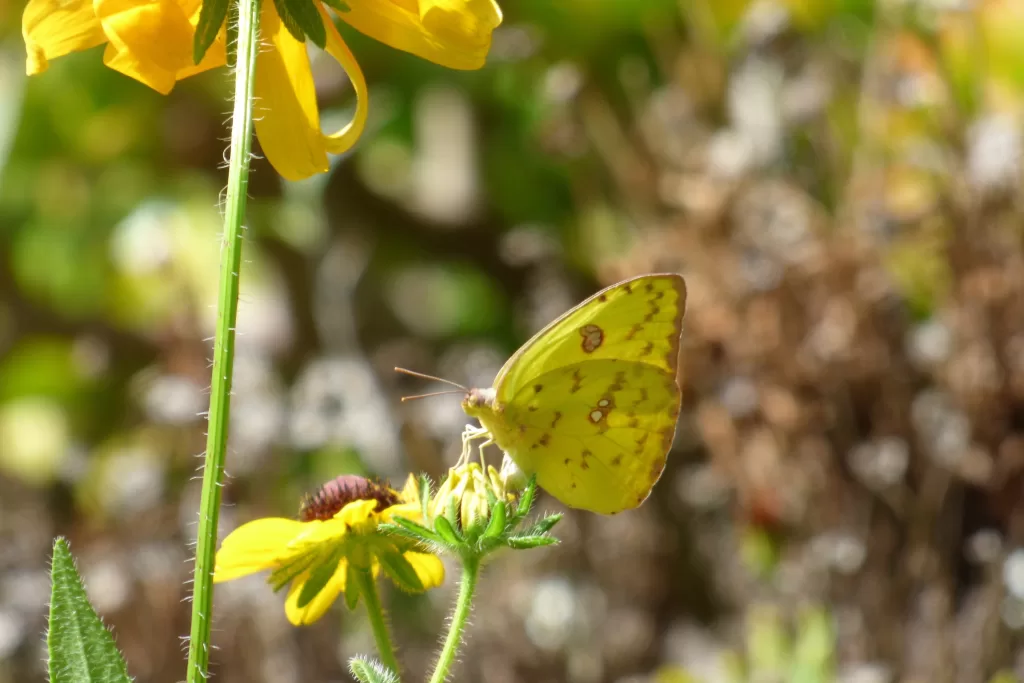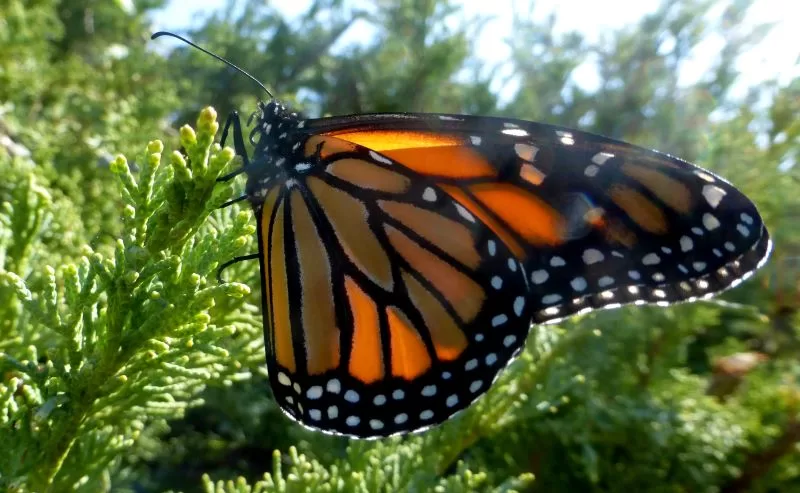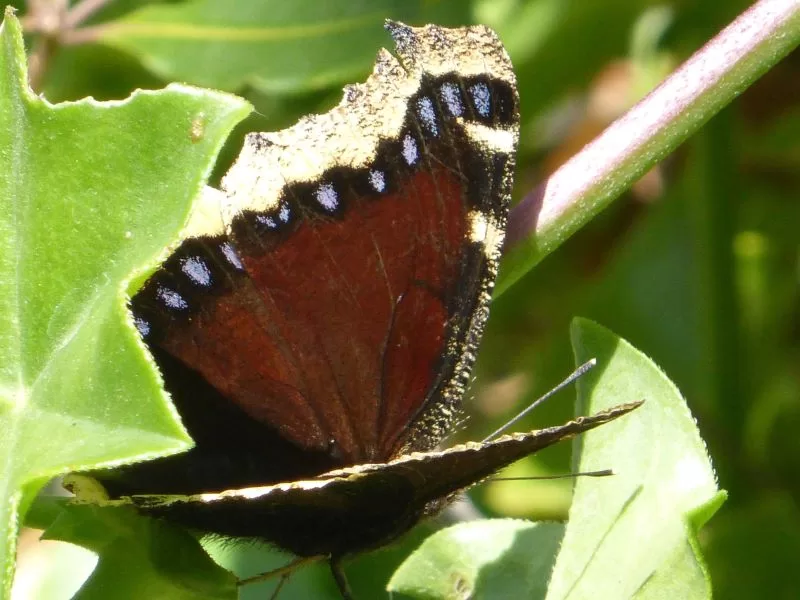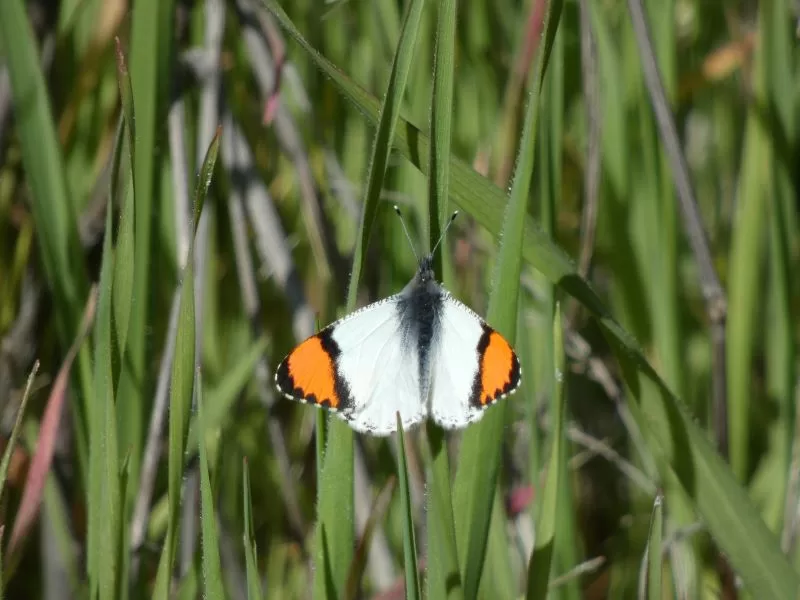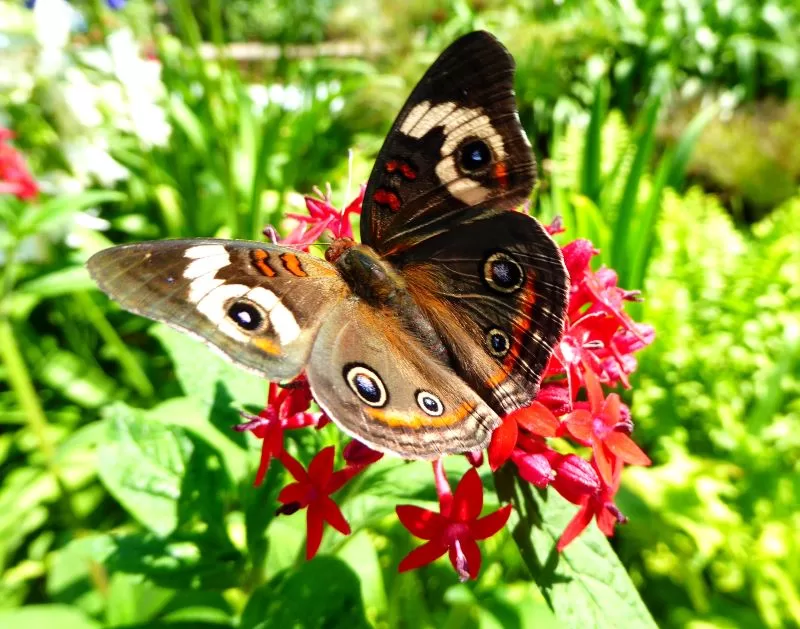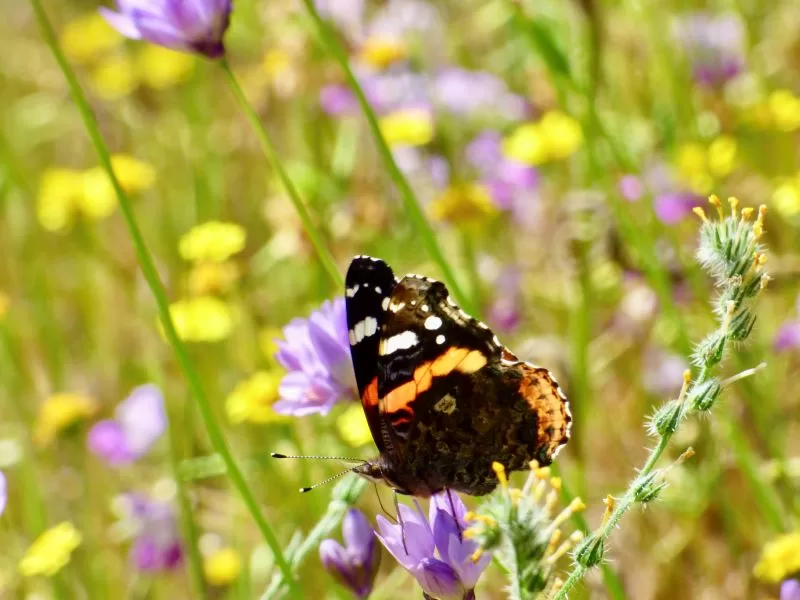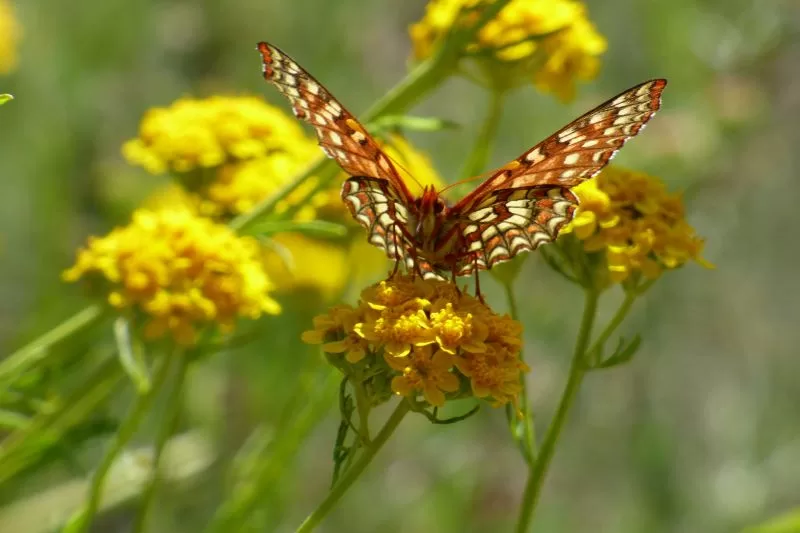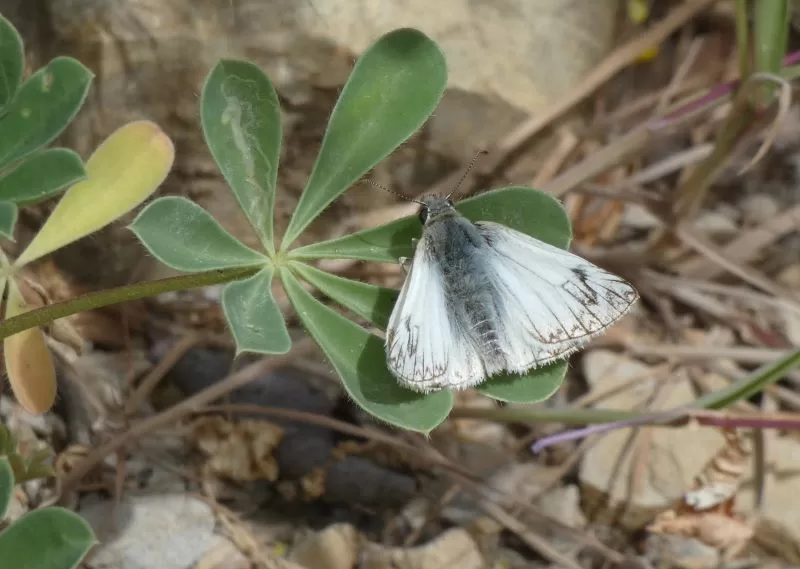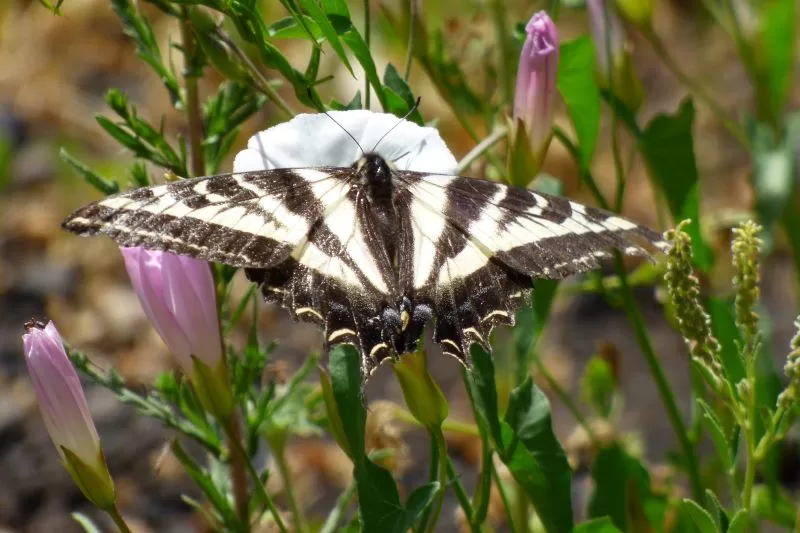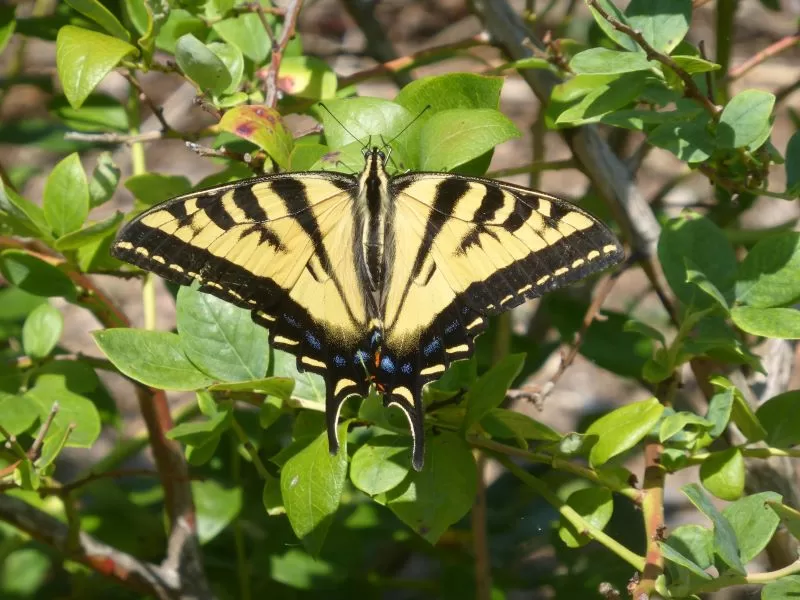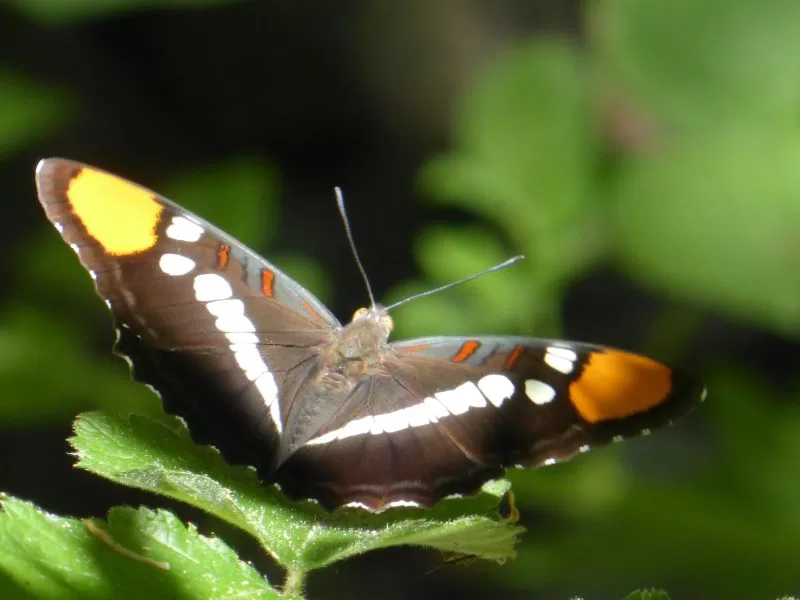
Backyard Butterflies
Fly, white butterflies, out to sea,
Frail pale wings for the winds to try,
Small white wings that we scarce can see
Fly.
Some fly light as a laugh of glee,
Some fly soft as a low long sigh:
All to the haven where each would be
Fly.
—Algernon Charles Swinburne, “Envoi,” 1883
Everywhere, all over the Santa Monica Mountains this spring, butterflies are on the wing—“frail pale wings for the wind to try.” While everyone is familiar with the orange and black splendor of the monarch and the vivid gold and black of the swallowtails, there are numerous smaller butterflies adrift in gardens and open space that are less well known, but no less remarkable than their larger, showier relations.
Butterflies and moths belong to the order Lepidoptera. It’s a big family, with more than 165,000 species. There are at least 70 species of butterfly in the Santa Monica Mountains and this area could potentially still be home to species that have never been identified or named.
Because of its metamorphosis from caterpillar to winged beauty, the butterfly is a symbol of the immortal soul in many cultures, including Egyptian, Greek, and Roman iconography. Traditionally, butterflies are also messengers sent by the dead to the living, the envoi in Swinburne’s poem.
That mythological heritage lingers in the scientific names for many butterflies, which reference satyrs and nymphs, gods and goddesses, kings and princesses. The common names are also evocative: painted ladies, mourning cloaks, duskywings, metalmarks.
Butterflies are a key part of the local ecology as pollinators and an important part of the food chain for wildlife. Habitat loss and pesticides are major threats to native butterflies. We can help by living poison free, planting native plants, and being tolerant if caterpillars eat those plants.
Butterflies, like the plants they depend on, are cyclical: some years there are an abundance of one or another species, in other years, one encounters almost none. This is a good year for many native butterflies, the abundant rain and extended spring wildflower season provides ideal conditions.
Late morning or early afternoon on May or June days when the morning marine layer has burned off and there is little or no breeze is an ideal time to look for butterflies. One often doesn’t have to go any further than the backyard to observe a surprisingly wide range of Lepidoptera.
All butterflies are tied to the life cycle of the plants that support them. Some species are able to use a variety of plants, others only feed on a specific plant—like the monarch’s caterpillar, which only feeds on milkweed.
Butterflies are a living symbol of transformation, but they are also ephemeral. Some migratory species, like the Western monarch, can live for eight or nine months, but most emerge from their chrysalises into their winged form for a final life phase that lasts just a few weeks. The butterfly’s goal is to find a mate and ensure that there will be a next generation. The patterns on the butterfly’s wings carry messages to prospective mates and potential predators—beautiful and ethereal messages, borne on the wind.
